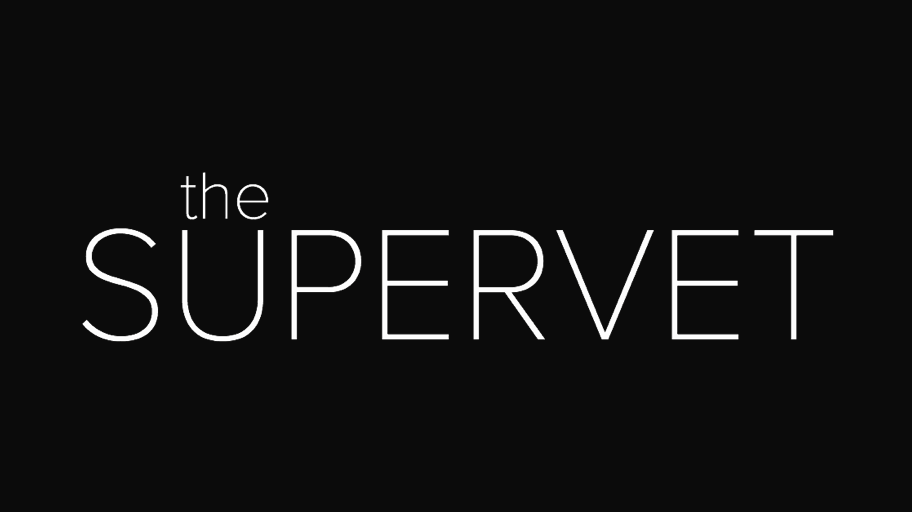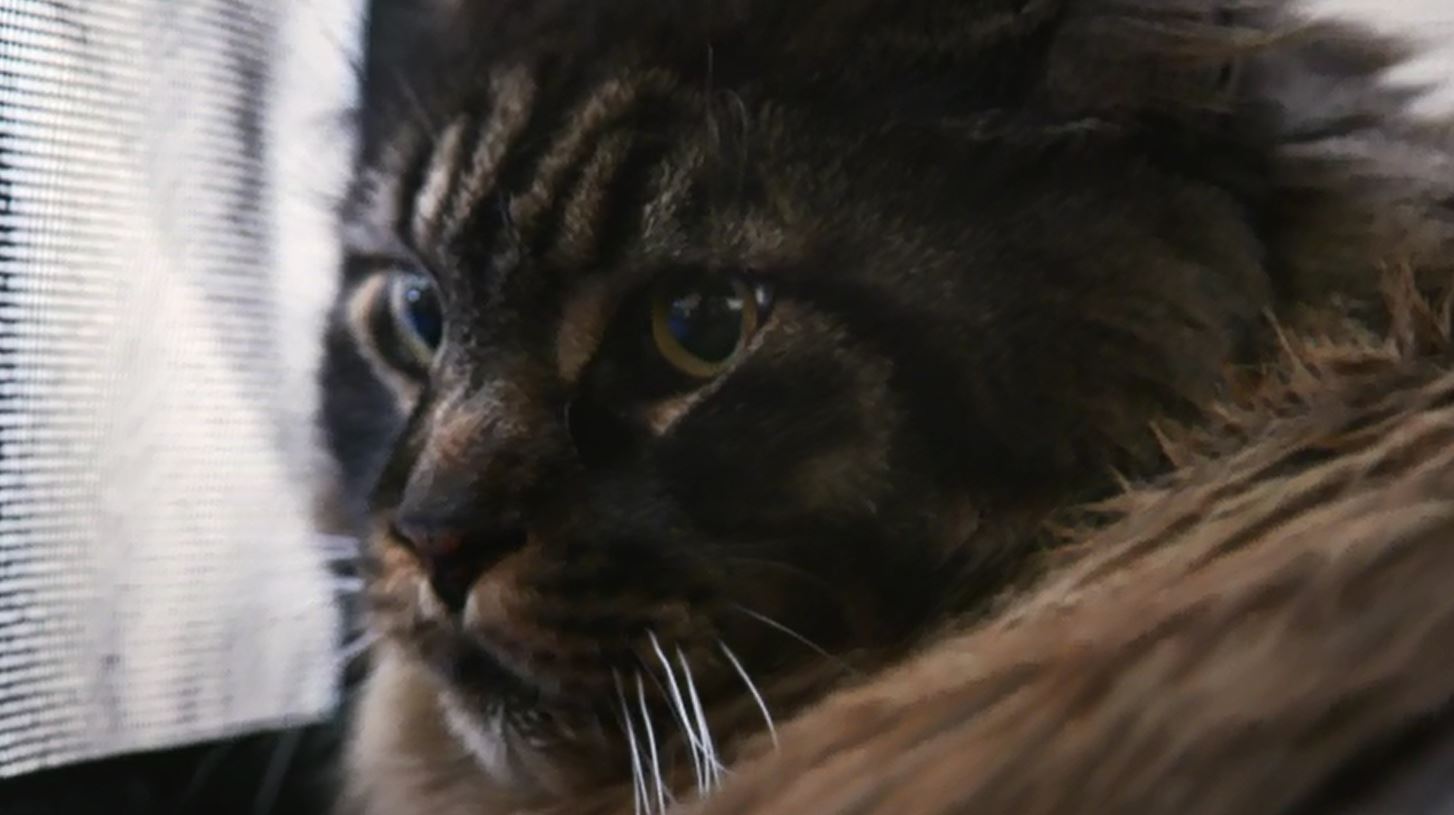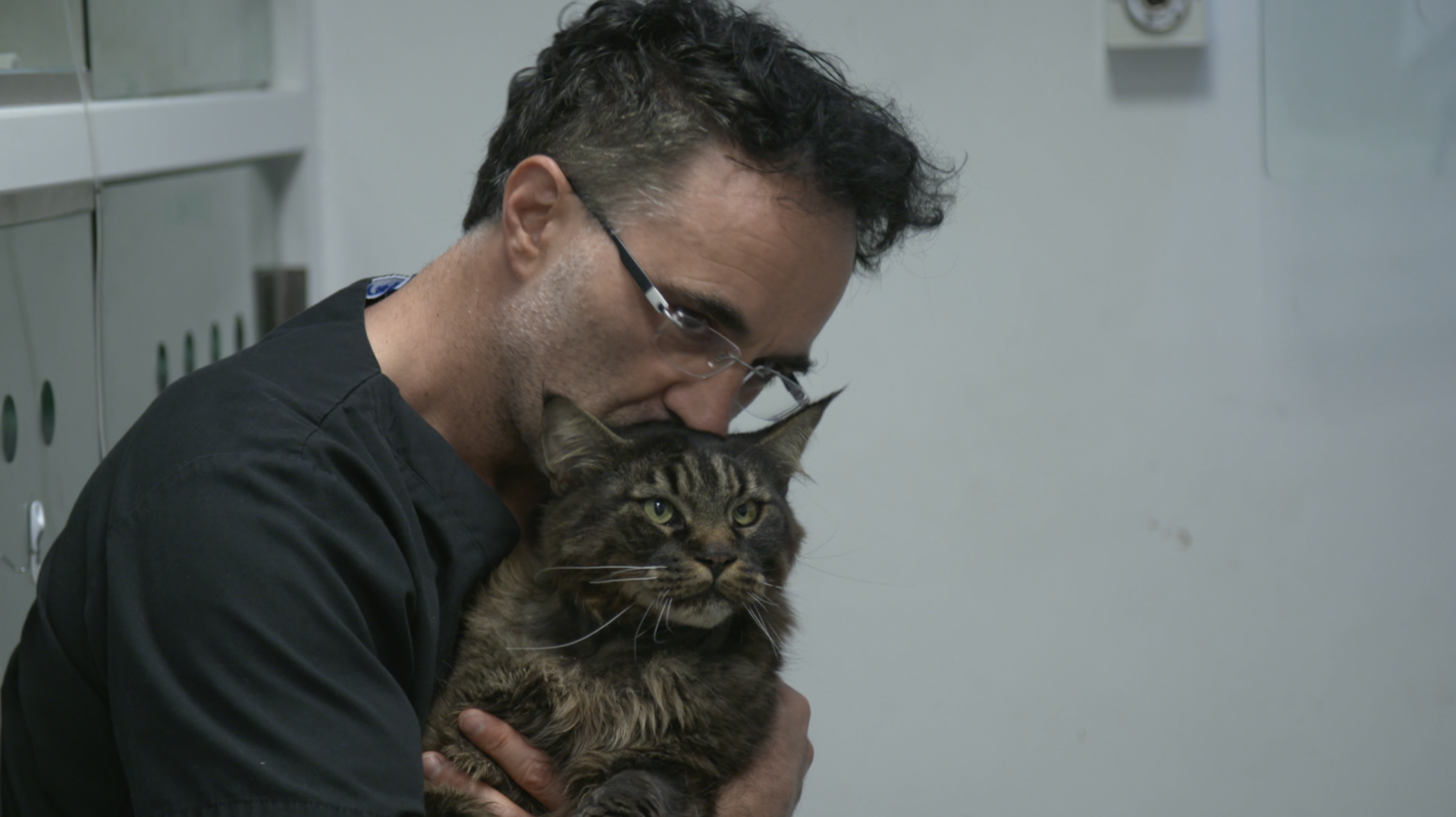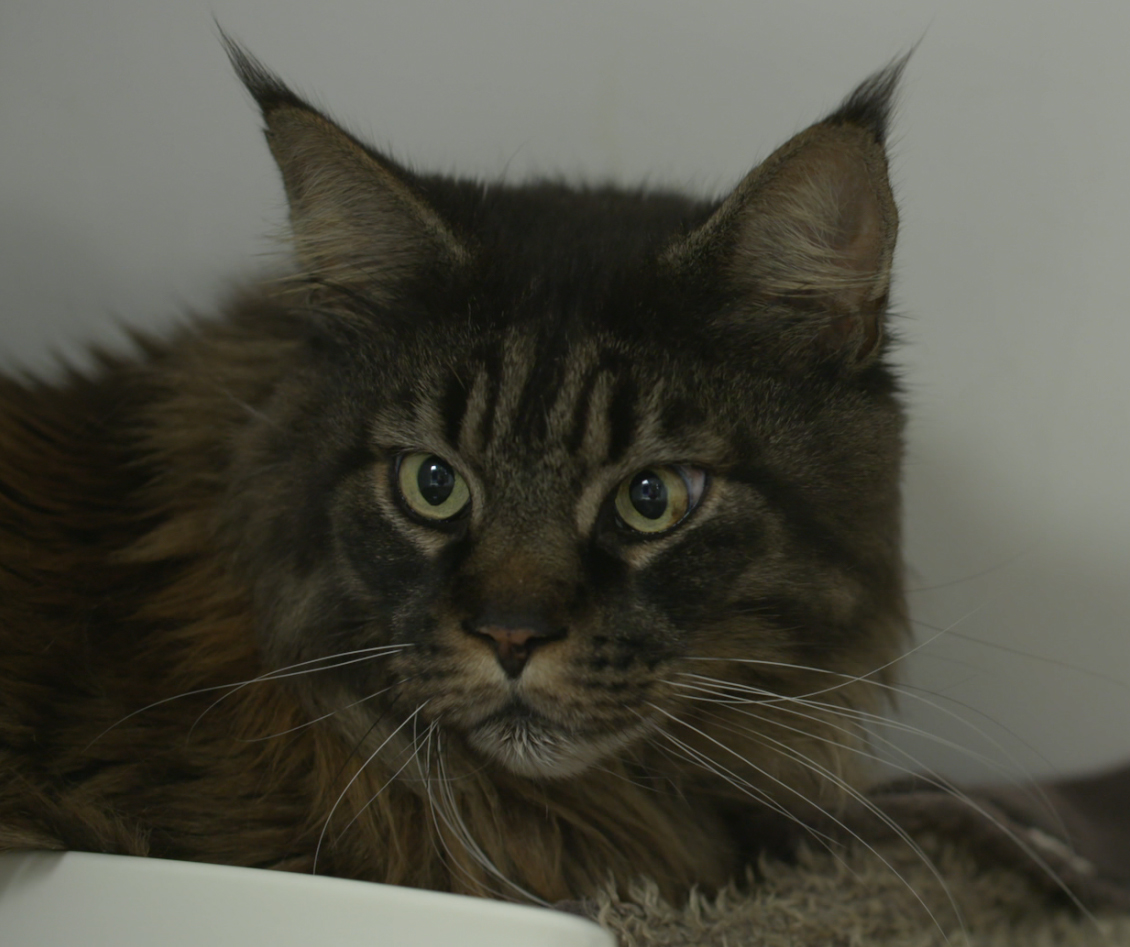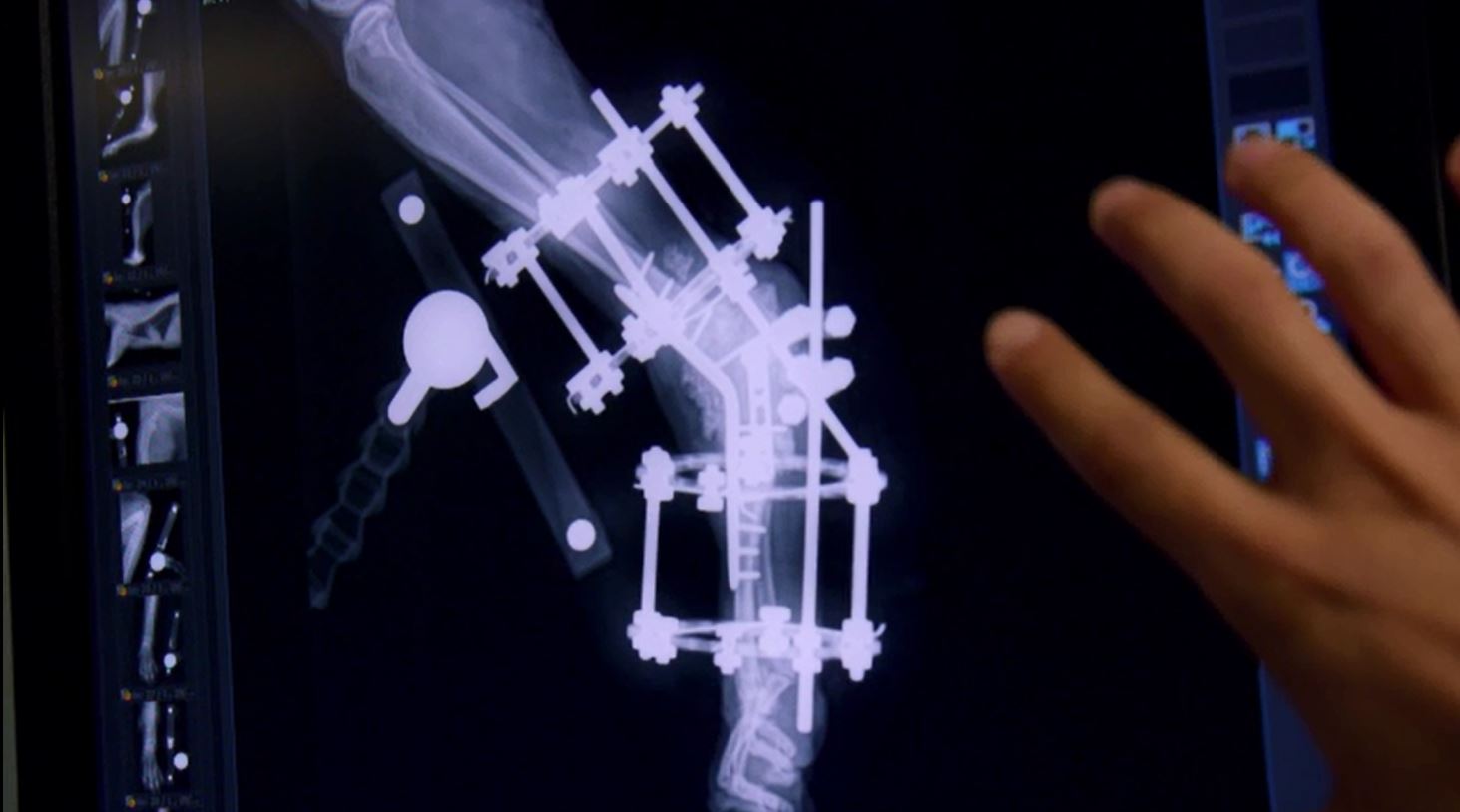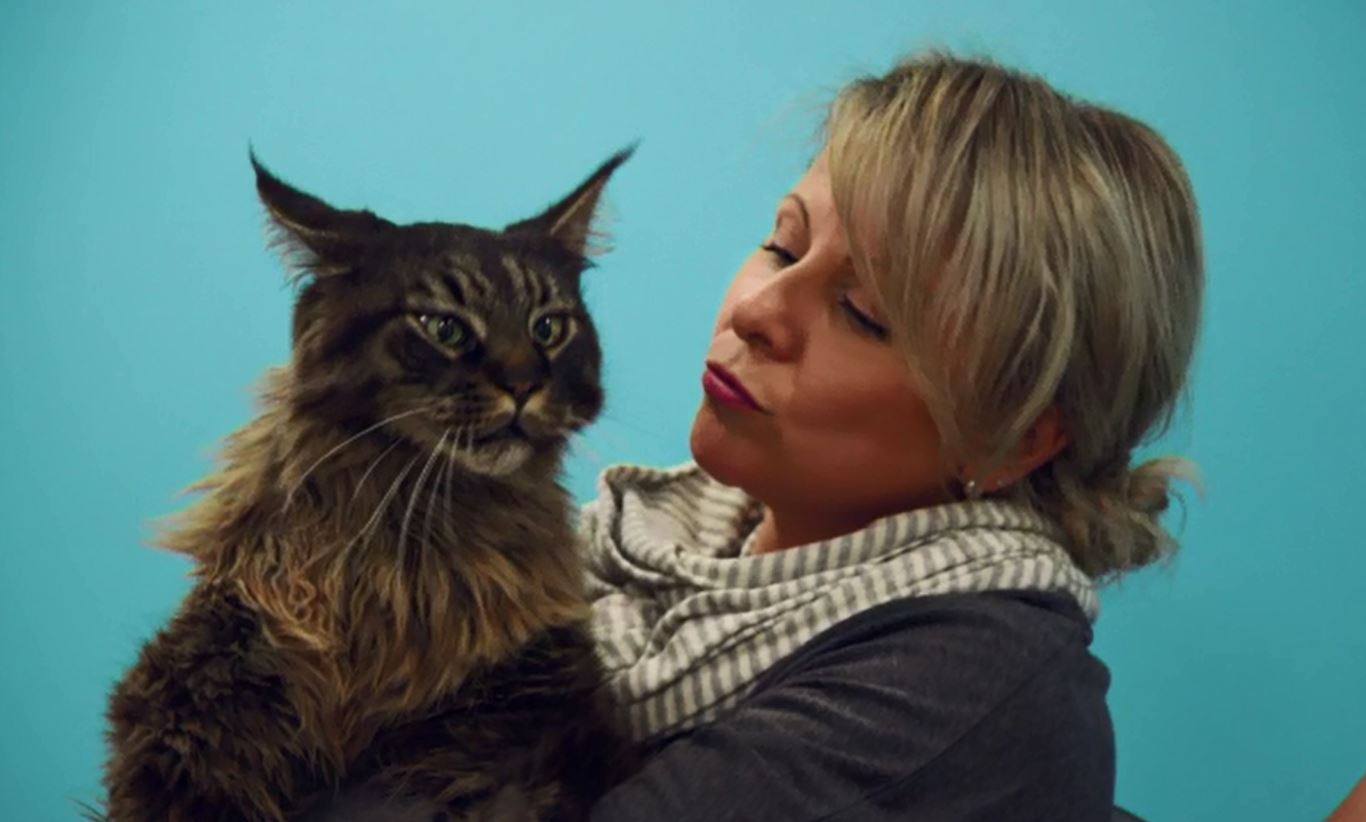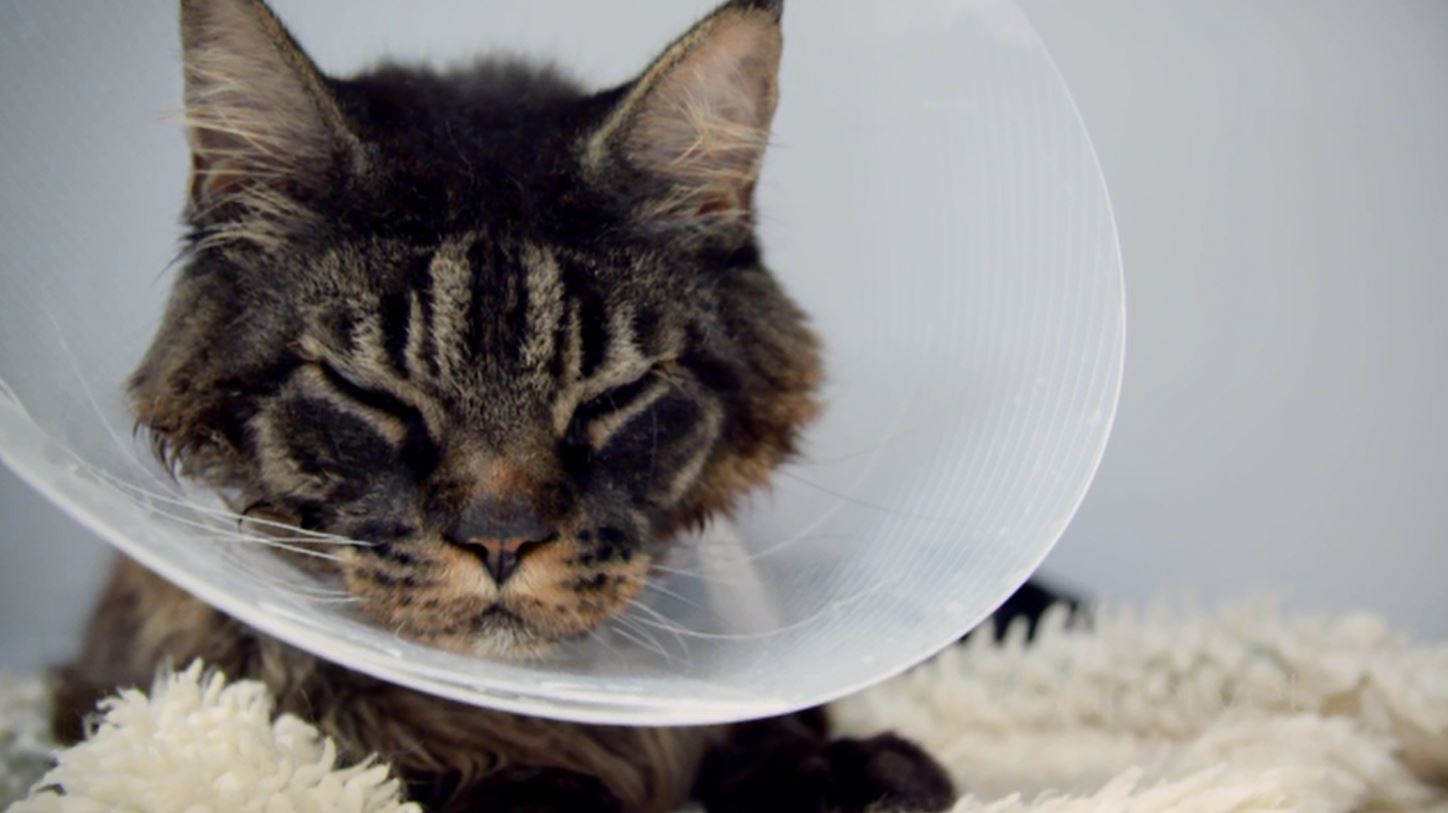Ivor
Beautiful three-legged Maine Coon cat Ivor is the centre of Mark, Joanna and son Charlie’s family. Four years ago he lost his leg in a suspected animal attack but bounced back quickly, but now he is suffering from a mysterious swelling in his remaining back leg. The family are painfully aware that it is vital Noel is able to fix Ivor’s leg for him to survive. But it’s a massive struggle, involving innovative surgery and a fight against chronic infection to try and get him home for Christmas…
Their Story
Mark and Joanna live in Cambridge with Ivor their cat and 18-year-old son Charlie. Ivor is much loved by all of the family. A few years ago Ivor had one of his back legs amputated after a suspected fox attack, but he bounced back quickly. Having three legs never stopped Ivor from being a normal, active cat - he was able to jump up onto things and even catch mice and rabbits!
The Problem
The family noticed that Ivor was suddenly reluctant to do the things he was doing before. When they took him to their local vets, they found a dramatic swelling on Ivor’s remaining back leg and feared it could be cancer – so the family were referred to Professor Noel Fitzpatrick. Noel explained the three possible reasons for the swelling; tumour, infection or inflammatory disease of some kind. Noel ordered a CT scan of Ivor’s leg to get more information on what happening and to try to identify the nature of the problem. The good news was that it showed it was unlikely to be cancer, but there was some oozing from a small wound that turned out to be a nasty bacteria. The CT scan showed that the tibia bone had completely dislocated from the ankle, something that was likely to have happened at the same time as the original incident with a fox a few years ago. The joint had chronically remodelled over the years and the infection was taking advantage.
Treatment
Ivor had limited options and the stakes were high, if nothing could be done for his remaining back leg, he would face euthanasia. Noel recommended that total joint fusion would be Ivor’s best option, but warned that the infection could potentially ruin the chances of success. Mark and Joanna decided to fight and put Ivor through surgery; he was still young and so full of life in every other way. Before Noel could operate, the team put Ivor on a course of antibiotics to try and fight the infection. Three weeks later, there were promising signs that the infection was reducing and that it was safe to operate. In surgery, the first thing Noel did was remove the remaining portion of Ivor’s amputated leg so that he could grind the bone into a graft to help fuse the ankle joint. Once Noel has fused Ivor’s ankle with a special plate, he packed the bone graft into the tiny gaps to help it heal. Since Ivor only had one back leg – Noel attached an external frame to provide extra support to the newly fused ankle whilst it healed. Ivor remained at the practice under close observation to watch out for any signs of the infection returning.
Sadly, a week after surgery, Noel’s worst fears were realised as the infection returned. Noel explained to Mark and Joanna that the bone graft will have been flushed out completely and that the fusion would need to be re-attempted once the infection had resolved. Noel explained the gravity of the situation and that in usual circumstances he would consider amputating a limb like this, but they clearly didn’t have that luxury with Ivor. The family decide to continue fighting for Ivor and so Noel immediately set about tackling the infection head-on. Ivor is prepared for surgery and Noel mixes two different antibiotics with a calcium sulphate powder to form a paste. From the paste he makes antibiotic beads, which are inserted into Ivor’s ankle. The beads will slowly release antibiotic over the following days and weeks in an attempt to combat the infection.
The returning infection caused most of the bone near the fusion site to be damaged, leaving a large gap between the bottom of his tibia bone and his foot. This large gap would need to be bridged with a custom-designed implant. Part of the new implant is a titanium scaffold, which will be seeded with millions of cells propagated in the laboratory at University College London, from Ivor’s fat tissue. The team have given the cells growth cues that will change them into a bone-like cell that will grow into and around the scaffold to bridge the gap in Ivor’s leg.
Finally, the infection seemed to be subsiding and so all of the teams’ efforts and preparations could be put to good use as Ivor was prepared for surgery once more. Noel starts by removing the antibiotic beads and the original implant. Next, Noel places a new custom-plate and then inserts the cell-seeded titanium scaffold into the gap. Nine days after Ivor had pioneering implant surgery, Noel was delighted to see how amazingly he was walking around. The day finally arrived when he was deemed well enough to go home at last.
“I love him so much. We’ve got to, I feel like, we’ve just got to try everything” Joanna
Outcome
After 10 long weeks at the practice Ivor was finally going home. The family were astounded at the ingenuity and care that led Ivor to overcome so many obstacles and bounce back to health once again. Now Ivor is back home in Cambridge for Christmas and CT scans have shown that new bone is growing around his titanium implant to bridge the gap. Since Mark and Joanna had feared that they may have been one less this year, having him at home with his family for Christmas is the best present they could have wished for.
